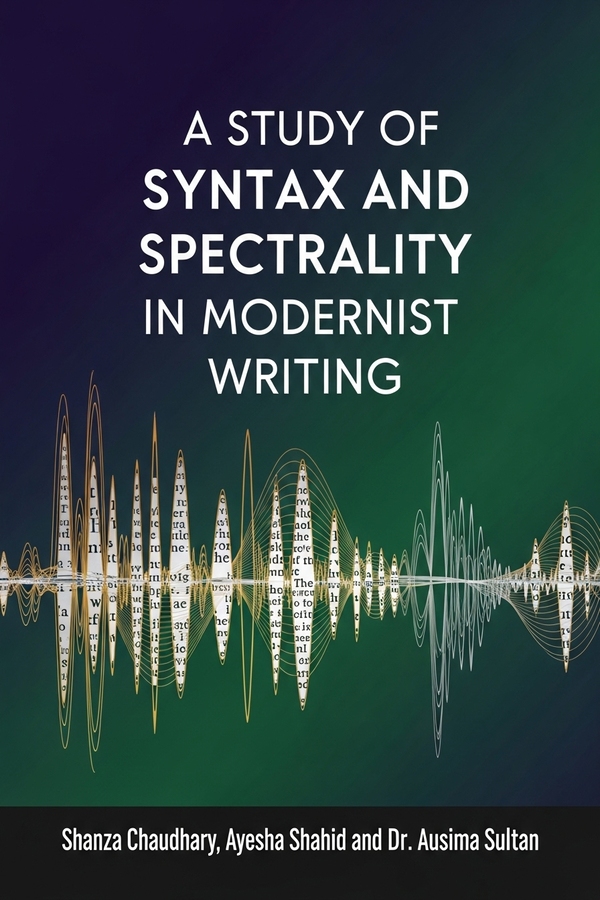
A Study of Syntax and Spectrality in Modernist Writing
A Study of Syntax and Spectrality in Modernist Writing” offers a rigorous exploration of the transformative role of syntax in articulating spectrality within modernist literature. Through meticulous close readings of seminal works by James Joyce, Virginia Woolf, and T.S. Eliot, the study reveals how disrupted grammatical structures and non-linear narrative techniques evoke themes of absence, haunting, and fractured consciousness. By integrating interdisciplinary methodologies from linguistics, psychoanalysis, and philosophy, the authors demonstrate that modernist writers deliberately subvert conventional language to mirror the cultural and psychological dislocations of the early twentieth century. The analysis situates syntactic experimentation as both a stylistic innovation and a critical tool for engaging with memory, identity, and temporality. Ultimately, this work advances a nuanced framework for understanding how language not only communicates meaning but also embodies the spectral dimensions of human experience, thereby reshaping literary expression in a rapidly evolving world, and profoundly invites further scholarly inquiry.
Shanza Chaudhary:Shanza Chaudhari is English Language Teaching (ELT) lecturer at the University of Kyrenia, Cyprus. She holds a Master’s degree in English Language Teaching and Linguistics, as well as an MPhil in English Language Teaching from Final International University, Cyprus. Prior to her current role, she worked as an EFL/ESL English Instructor in Turkey and as an English Lecturer in Pakistan. Her diverse international experience has equipped her with valuable insights into language instruction and acquisition.
Ayesha Shahid: Ayesha Shahid is an accomplished English language educator and researcher with over a decade of experience transforming language teaching through innovative curriculum design and technology integration. Her expertise spans English language proficiency and cutting-edge methodologies for diverse learners. Ayesha’s research-driven approach has led to presentations at prestigious conferences like TESOL Convention (USA), INTE at Harvard University, and TESOL Arabia, as well as influential publications in language education. She focuses on pedagogy and digital learning advancements to reshape modern ELT and foster meaningful learning experiences.
Dr. Ausima Sultan: Dr. Ausima Sultan is a linguist and researcher with a PhD in Linguistics and Literature, specializing in Critical Discourse Analysis (CDA), Multimodal CDA, Corpus Linguistics, and advanced Research Methodologies. Currently, she serves as the Head of the Department of Humanities and Sciences at the Institute of Space Technology (IST), Islamabad. Her research focuses on the intersection of language, power, and society, employing cutting-edge analytical frameworks to examine discourse in various social, political, and institutional contexts. Dr. Sultan’s work in Critical Discourse Analysis is well-regarded, particularly in exploring how language shapes ideologies and reinforces power dynamics. Her expertise in Multimodal CDA extends this analysis to visual and multimedia texts, offering a more comprehensive understanding of communication in today’s digital landscape. Additionally, she leverages Corpus Linguistics to conduct large-scale empirical studies, enabling her to identify patterns and trends in language use across diverse corpora.
A Study of Syntax and Spectrality in Modernist Writing” is a groundbreaking contribution to modernist literary studies, offering an incisive analysis of how syntax functions as both a structural and thematic device in the works of Joyce, Woolf, Eliot, and other key figures. Through a sophisticated engagement with linguistic theory, spectrality, and modernist aesthetics, the authors illuminate how fragmented sentence structures, disrupted syntax, and narrative experimentation evoke themes of haunting, absence, and historical dislocation. This book is essential reading for scholars of modernism, literary theory, and philosophy, providing fresh insights into the ways language itself becomes a medium for spectral presence. A meticulously researched and intellectually invigorating work, this study not only deepens our understanding of modernist innovations but also challenges us to reconsider the spectral dimensions of language and meaning in literature. A must-read for anyone interested in the intersections of syntax, spectrality, and literary modernism.
